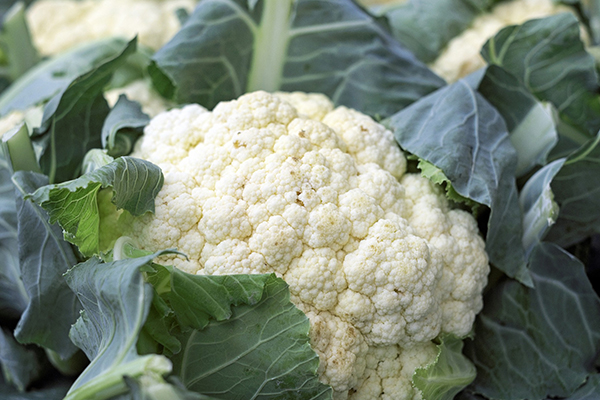Summer Vegetable Planting - Mid August


Early August is a good time to plant Swiss Chard (from seed or plants) & Cauliflower (from plants)
When starting crops mid-summer choose varieties with shorter growing cycles.
Swiss Chard is a dark green leafy vegetable with crunchy stalks. The provide more vitamins and minerals than almost any other green. Swiss Chard is one of the easiest vegetables to grow in your garden. It tolerates poor soil, cool temperatures and mild freezes. It can be planted in sun or shade or wet or dry areas in your garden. Outdoors, sow seeds 1/2 to 1 inch apart, in rows three feet apart. Thin seedlings to two to three inches apart. Swiss chard is quite tolerant to crowding, so don't worry if they appear too close. If you are just growing it for your home garden, a four to six foot row is more than enough for a whole family.
You can harvest the leaves regardless of size. Pick the outer leaves and the new inner leaves will soon grow in their place. The inner leaves are most tender and tasty. Cut the stems near the base, even if you are not going to use them. be careful not to cut the stems of the inner leaves. As the weather cools, the leaves are their tastiest. Even if a freeze kills off the outer leaves, the inner leaves may be protected. Cut away any frost damaged leaves and you'll find more Swiss Chard to pick. There are varieties that are very colorful you may want to grow just to add color to your garden or flower beds in the fall. A great variety to try is Bright Lights.
Cauliflower grows best is cooler temperatures. Cauliflower prefers full sun but will grow in light shade. Transplant seedlings in beds from 18 to 26 inches apart. Cauliflower must have a consistent and ample supply of soil moisture. It prefers rich soil high in magnesium. Side-dress nitrogen fertilizer when the plants are half grown. When the head begins to form (shows 2 to 3 inches of white curd at the growing point), it is ready to blanch. Tie the outer leaves together over the center of the plant to protect the head from sunburn and to keep it from turning green and developing an off-flavor.
The cauliflower head’s curd develops rapidly under proper growing conditions. It grows 6 to 8 inches in diameter and is ready to harvest within 7 to 12 days after blanching begins. The mature heads should be compact, firm and white. Harvest the heads by cutting the main stem. Leave a few green outer leaves attached to protect the heads. Cut the heads before they become over mature and develop a coarse, "ricey" appearance. Once individual florets can be seen, quality deteriorates rapidly. Because cauliflower does not ordinarily develop side shoots, plants may be disposed of or composted after heads are harvested. A great variety to try is Snow Crown.
Always follow the directions on seed packets or plant tags for your specific plant variety.
